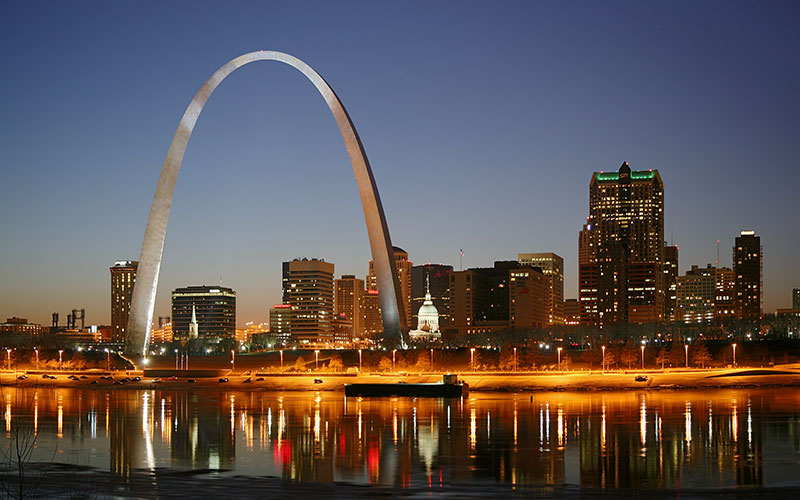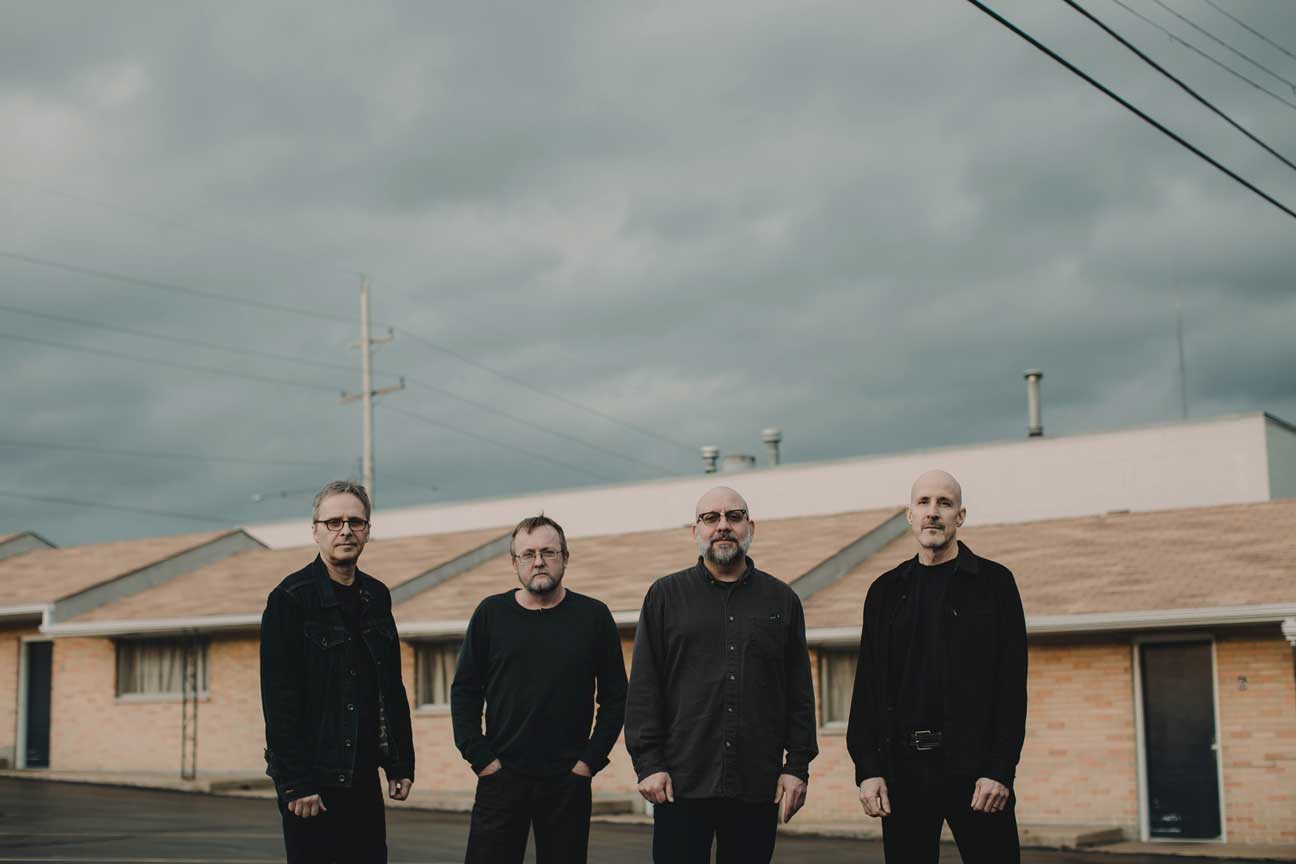Picture this: you’re reclining on a rooftop in a lounge chair situated by a kidney-shaped pool of azure water. It’s sunny, maybe even a little muggy, but you don’t care—you’ve got a cold drink and there’s a slight breeze coming off the Mississippi. Before you is a sweeping view of downtown St. Louis.
The building beneath you is a bona fide architectural marvel designed by Louis Sullivan. If you’ve heard the quote “form follows function,” you’ve heard of Sullivan, sometimes referred to as the father of skyscrapers. You can experience this made-for-Instagram moment as a guest at Hotel Saint Louis, a boutique hotel in the former Union Trust Building, which is on the list of St. Louis City Landmarks as well as on the National Register of Historic Places. Louis Sullivan completed work on the fifteen-story office building in 1893, making it the second skyscraper built by the Adler and Sullivan architectural firm in the city of St. Louis. The firm made history by constructing the first true steel-structure skyscraper, the Wainwright Building, in 1891. The two historic buildings sit two blocks apart, and the Wainwright can be seen from many of Hotel Saint Louis’s windows.
A new wing of the hotel building was designed by Eames & Young, prominent St. Louis architects. As an additional point of architectural interest (and a bit of gossip), Frank Lloyd Wright’s last job working as a draftsman for Sullivan was on the Union Trust Building. Sullivan fired him in 1893, supposedly for taking independent commissions.
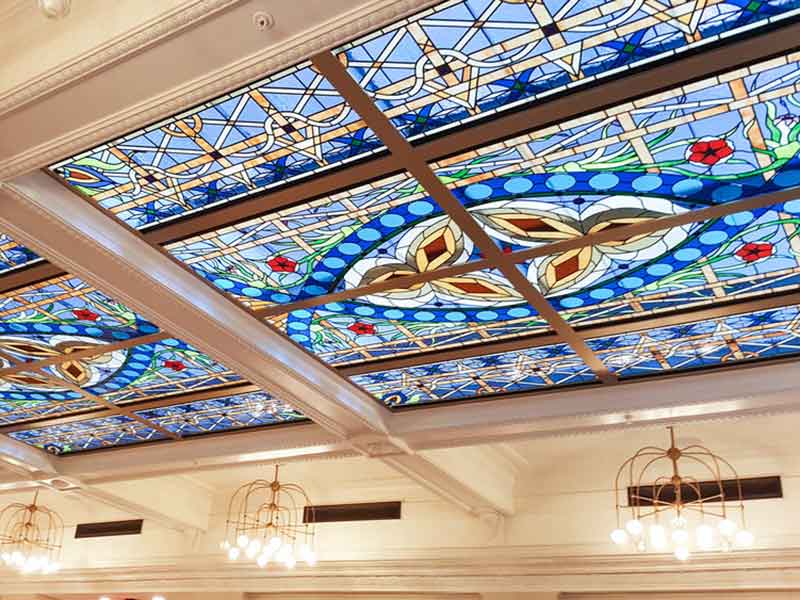
Used as office space and then sitting vacant for a few years, the building was purchased in 2015 by Amy and Amrit Gill of Restoration St. Louis. The Gills spent the next three years and about $71 million dollars transforming the historic structure into a hip contemporary hotel, all the while preserving and promoting the building’s architectural legacy.
Harry Lunt, senior vice president of Innkeeper Hospitality Services, says the Gills scrupulously supervised every aspect of the renovation and design. “Amy and Amrit walked the property nearly every day.” They were also in contact with the general contractor several times a day, Harry says. “Additionally, Restoration St. Louis acted as an owner-supplier. Having past experience and knowledge of historic rehabs, Amy knew how to design and source the fixtures, furniture, and equipment, and we tried where possible to use local vendors such as Troco Custom Fabricators.”
Despite street-level floors being altered in a previous renovation, the hotel’s facade still features Sullivan’s upward towering lines accentuated with original elaborate terra cotta trim and cornice ornamentation.
Sullivan created the building in a U shape with a central recessed section flanked by two wings, all rich with windows. The concept was to enhance the daylight that reaches the interior space. The hotel feels light and bright with guest rooms fitted into the wings and daylight streaming into the elevator landings in the central corridor.
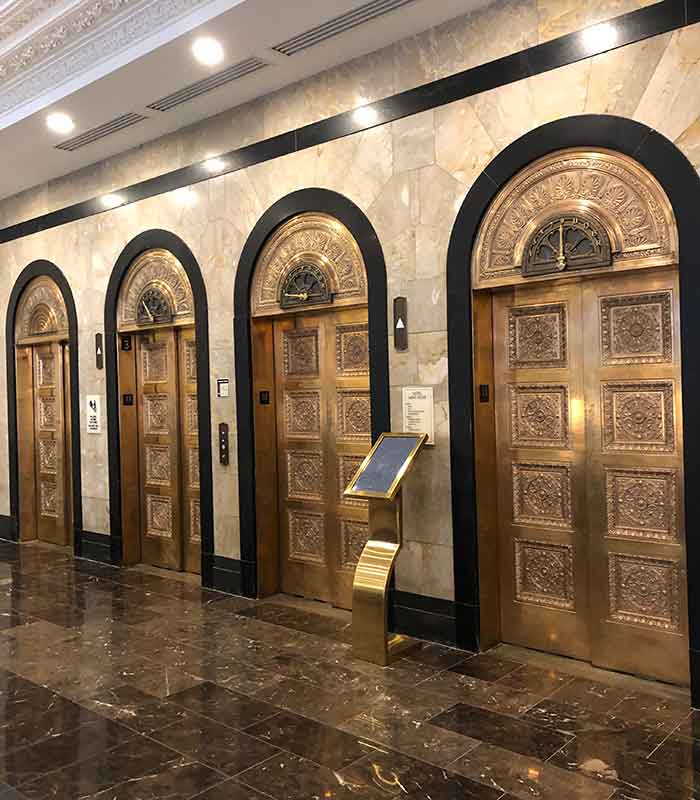

The Gills took great care to incorporate Sullivan’s features into the hotel’s interior. They refurbished his original arched windows, among other features, and re-created some elements of the original building, such as the two-story lobby with mezzanine and stained-glass atrium roof.
Additional Sullivan tributes include incorporating the whirls and swirls of Sullivan’s cornice design into the wallpaper. The hotel’s two dining facilities are also named with him in mind. The street-level dining room, Union 30, is named for the Union Trust Building’s City Landmark number 30 and the fact that only 30 Sullivan buildings remain in existence. The rooftop bar, Form Skybar, was named for Sullivan’s famous motto: “form follows function,” a principle of modern architecture coined by Sullivan that claims the shape of a structure should be dictated by its function.
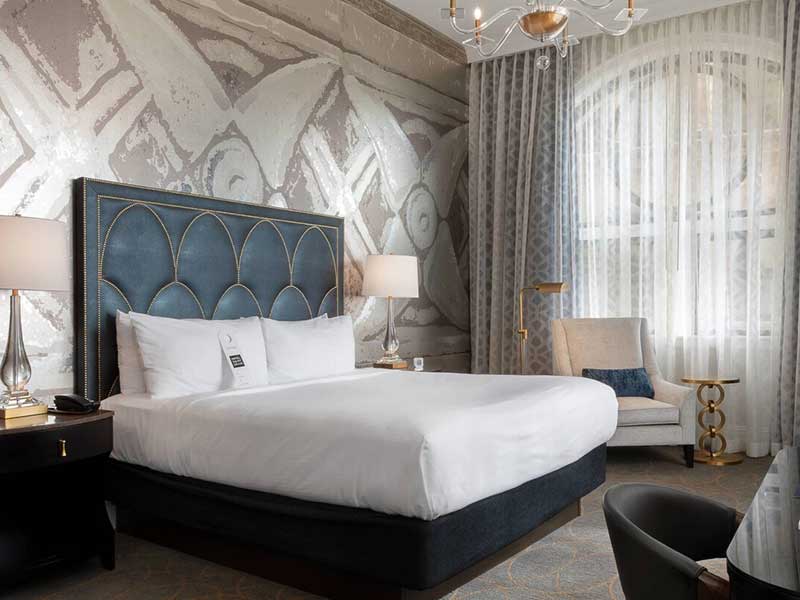
Focusing on Sullivan’s glorious past might make the hotel feel like a living museum, which it sort of is, but the hotel’s vibe is decidedly unpretentious, spotlighting not only the famed architect, but also all things St. Louis. Local artist Fern K. Taylor painted portraits of Sullivan, Maya Angelou, Betty Grable, Josephine Baker, and other celebrities connected to the Gateway City. They hang in the lobby and conference rooms. Rugs and headboards are patterned after the 630-foot iconic Arch the city is known for. Old-fashioned, St. Louis-manufactured record players sit in each guest room along with vintage records by St. Louis-related musicians. Mini bars are stocked with local treats, such as Budweiser beers and Bissinger’s candies to remind you of a few more things the city is famous for.
The 140 guest rooms (52 of them suites) feature plush beds and high-thread bedding, marble bathrooms with TVs embedded in the mirrors, huge showers with soaking tubs, and toilet seats with built in bidets.
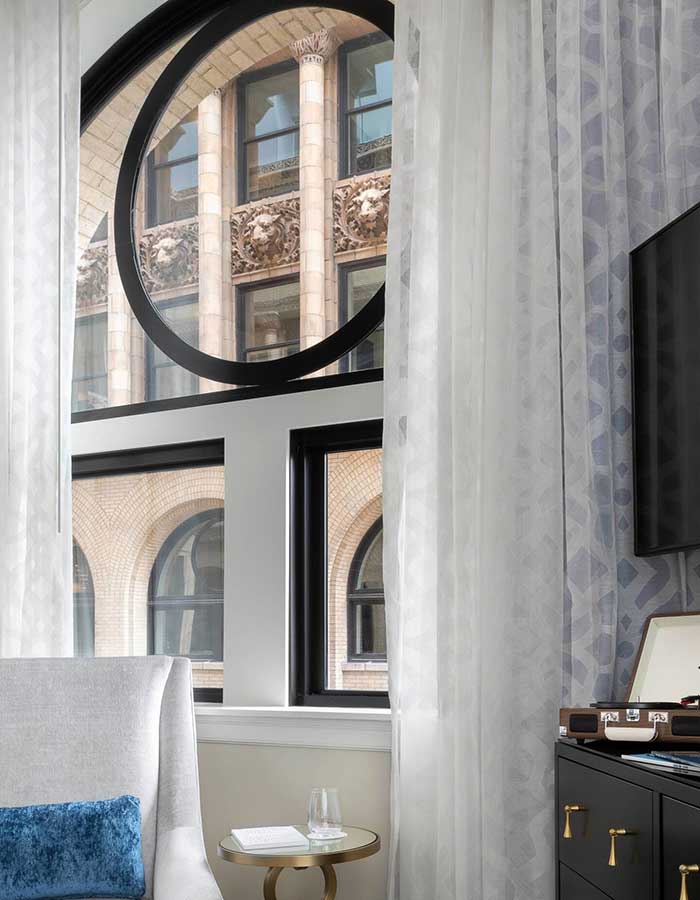
But perhaps it’s the street-level restaurant bar, Union 30, that best captures the hip, hot, and historic spirit of St. Louis.
Although items change often, Executive Chef Matt “Birk” Birkenmeier sets the rotating menus with St. Louis comfort food in mind, including some of the best barbecue in the city. He also offers creative takes on hometown favorites like toasted ravioli and gooey butter cake. He adds personal treasured dishes culled from his grandmother’s recipes, such as chicken and dumplings.
For locals who like to celebrate the past, Matt imaginatively interprets dishes reincarnated from long-closed, beloved St. Louis restaurants. For example, he researched and found the exceedingly popular onion soup recipe that was served at Famous-Barr, a popular St. Louis department store that closed in 2006.
“But I add my own touches,” Matt says. “For example, I added chopped smoked prime rib to the original Famous-Barr Onion Soup recipe.”
“I would call my cooking style comfort food with a twist,” Matt says. “I have a hodgepodge love of the culinary best of the Midwest and South in me, along with a dash of New Orleans spice. I incorporate all these styles in my cooking at Union 30.
“For Form Skybar, I stick with appetizers and shareable plates, but I still keep the spirit of St. Louis alive by featuring dishes from local neighborhoods such as Cherokee, Soulard, and the St. Louis Bosnian community. And I like to play around, for example, I put a deep-fried grilled cheese sandwich on the menu and use it as a dipper—just me being silly.”
An ever-increasing number of hotels in Missouri and beyond are beginning to favor accentuating the local flair and regional identity over homogeneity. Hotel Saint Louis is a prime example.
The architectural enthusiast, the history buff, the foodie, the hotel connoisseur, and the aspiring social media influencer may all find something to marvel at here, and the list of reasons to visit this St. Louis landmark is longer than ever.
Photos // Autograph Collection Hotels, Susan Katzman
Related Posts
Herbaria Makes Natural Soap, Shampoo, & Insect Repellent in St. Louis
In Ken Gilberg’s line of work, he gets on his soapbox daily. He loves to speak out about Herbaria, his St. Louis-based company’s all-natural, vegetable-based soaps, deodorants, bath bombs, bath salts, moisturizers, aftershaves, insect repellents, and gifts.
27 Things to do in St. Louis
We know how overwhelming it can be to plan your day out when you visit a new city, so we did it for you. Here are the best places to grab a meal, see artwork, shop, and enjoy the Gateway City.
St. Louis Rock Band Finn’s Motel Returns With Two New Records
“By the time I got done mixing and mastering everything that we started, it got done in 2017, so we put two albums out in the same year,” Joe says. “The reason these records got divided the way they did is that there were a handful of themes that seemed like they belonged over on this side and a handful that belonged on that side.”


